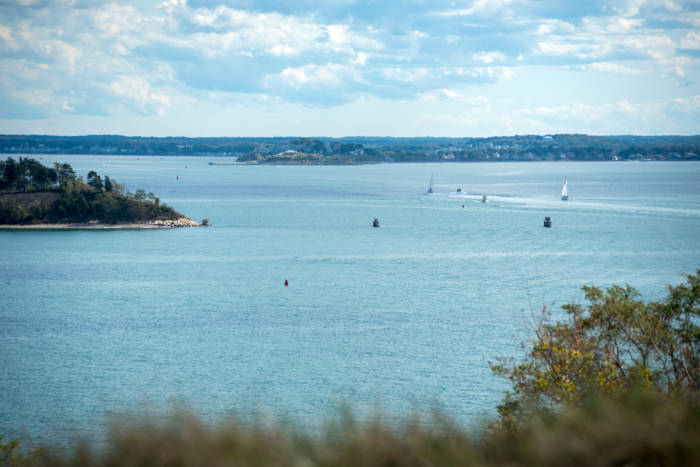
Tribal organizers ask for recognition of past horrors in debate over bridge and recovery project
With a historic mayoral race looming over Boston, Native leaders in the region see an opportunity for candidates to right the wrongs of previous administrations.
Considering the field of candidates, the election is already proving to yield a series of firsts. As things look now, it’s likely that the victor will almost certainly be Boston’s first elected mayor who is not a white man—and they could very well be the first elected woman to run the city.
Each candidate also boasts a unique platform seeking to address racial and social inequities that have long been intertwined within the city’s otherwise much-touted history. Yet, despite these notable leaps, some tribal communities fear their concerns may go unaddressed.
“This would be the first … campaign for the mayor of Boston where Native American issues became one of the issues between the candidates,” said Gary McCann, tribal policy advisor for the Chaubunagungamaug Nipmuck tribe. The tribe is one of the 23 tribes in the Muhheconnew National Confederacy (MNC) that historically occupied much of North America’s upper east coast.
“It’s possible, because there is this issue of Long Island,” said McCann, in reference to the Long Island Bridge and Recovery Center projects. “They’ve tied it into the campaign.”
So far, candidates have expressed plans for rebuilding the bridge, first demolished in 2014, and for reopening the eponymous 500-bed hospital campus on Long Island in Boston Harbor to help mitigate the region’s opioid crisis. The reconstruction efforts, approved in 2018 by the Massachusetts Environmental Policy Act Office, have been contentious among some tribal communities due to the island’s use as a concentration camp for Native peoples during winter 1675 through spring 1676.
Despite these concerns, the project was subsequently cleared by the Massachusetts Historical Commission (MHC) following a survey in conjunction with the Mashpee-Wampanoag Tribe. The survey failed to reveal anything of note; the location of the gravesites, if any, is unknown. Nevertheless, an alleged lack of transparency on the part of the city of Boston and the MHC study has led McCann, along with other leaders in tribal organizations, to closely consider the environmental impact reports (EIR) of individual candidates.
“That protection of sacred sites issue [and] having a robust consultation process on the city level, I think, is key to what a candidate for office would need to say so that they would have the confidence of the indigenous people within the city,” said Jean-Luc Pierite, president of the North American Indian Center of Boston (NAICOB).
Though it falls short of an EIR, acting Mayor Kim Janey intends to “retain a professional archaeological firm,” said Nick Martin, chief communications officer for Janey. The firm, which has not been selected, will survey the land before construction and release the findings to the public.
Janey, who ascended into office following then-Mayor Marty Walsh’s appointment as Labor Secretary of the United States, now seeks a full term and intends to release the bid for the bridge project later this year. Given that construction is not likely to begin until 2022, her administration is evaluating using ferries to expedite the campus’ reopening.
“In the interest of exploring ways to accelerate the reopening of vital regional recovery services on Long Island, Mayor Janey has also asked her team to take another look at hospital and public safety infrastructure that could be added to the island as well as how ferries might complement the guaranteed, all-weather access that a bridge provides,” Martin wrote in an email.
Martin confirmed the infrastructure component of the plan is in a “very early exploration phase.” The administration did not provide further information but noted that any additional construction would be limited to campus-related infrastructure.
Further building on the island has been a concern of Pierite and McCann. The Walsh administration previously nominated the census tract Long Island resides in to be an opportunity zone. The designation, a feature of the US Tax Cut and Jobs Act of 2017, is intended to spur private development in low-income areas by offering tax breaks and deferments.
Though there were multiple people involved in the process, John Barros, another candidate and former chief of economic development for Walsh, was involved in the tract’s selection. He previously described the administration’s intentions as a “‘do no harm’ approach.”
In a statement, Barros said he “was proud to support the building of the Long Island Bridge and the creation of a comprehensive substance use recovery campus on Long Island in Boston Harbor.” He did not clarify his role in the process or if he was aware of the island’s history at the time.
Similar to Janey, Barros and Councilor Anissa Essaibi George (one of three sitting Boston City Councilors also running) both pledged to refrain from allowing development beyond the recovery center and bridge. They also committed to instituting frameworks to ensure any remains are not disturbed. The details of their individual plans were not provided.
Though Councilors Michelle Wu and Andrea Campbell, both of whom are also running, voiced intentions to work with the Native community on the project, they have opted for different approaches. Wu, for example, remains the only candidate to commit to an EIR before moving forward with any construction on the island.
“I echo the call of the Native community for an Environmental Impact Review that will determine the location of the burial sites,” said Wu’s statement. “It is absolutely critical that we center the voices of Indigenous Bostonians and engage with MICDI/MNC governments transparently and respectfully.”
While the EIR would allow for more educated decisions over land use, Wu’s campaign noted she could not commit to limiting future projects on the island. She would instead review development options and communicate with stakeholders.
Campbell, on the other hand, made no mention of surveys to study the land or protective measures for archeological findings. She did, however, commit to ensuring the hospital “acknowledges and does not further the harms our [N]ative communities have endured.”
Though not quite the assurance that McCann is looking for, he contends a core component of mitigating future harm to his community would be addressing the city’s past.
“I also think the constituents of the city of Boston would be supportive of not destroying any forensic evidence connected to the former concentration camp sites, were the knowledge to be widespread,” McCann said. “But you can see there’s a whole cycle here, right? The knowledge is not out there—people are not aware. And, therefore, if there’s no pressure on the political leaders, the situation continues to perpetuate itself.”
Yet, some of the candidates themselves are almost certainly aware.
In 2018, McCann and Pierite worked with Essaibi George, Wu, and then-Councilor Janey to push for the state’s history curriculum to include the Boston Harbor Islands’ use as concentration camps. However, the measure largely failed, and the curriculum currently contains no direct reference to the camps.
Though the future mayor would not have control over the Commonwealth’s curriculum, McCann feels that candidates should support such measures, particularly given the clout and influence the mayoral position would bring.
And, to their credit, both Wu and Essaibi George vowed to do so.
“I support acknowledging the full history of the Boston Harbor Islands’ past uses as part of our school curriculum,” Wu said. “Part of moving forward requires reckoning with our past, so we can repair harm and seek to build a Boston for everyone.”
Essaibi George directly acknowledges and labels the island as the site of a concentration camp. “We do have to honor that history,” she said. “Both the bad history, but also honor the souls that are there.”
It remains unclear if Janey, Barros, or Campbell would back similar measures or acknowledgments. State Representative Dr. Jon Santiago, who is also running, could not be reached for comment.
In addition to each policy declaration or promise (or lack thereof), each responding campaign vowed to work with the region’s tribal communities. Pierite confirmed NAICOB is currently communicating with candidates, but will not offer an endorsement.
Until the candidates have proven they can stay true to their word, McCann says he remains wary.
“Are they really in favor of addressing the issues of people of color, including Native Americans,” McCann asked. “Or is it just a slogan that they’re saying to gather votes?”
Dylan is a Boston-based freelance journalist, radio personality, and occasional comic. He likes taking long walks on the beach with dogs, playing extreme metal, and conducting investigative reporting.

